The City
Brief History of the city of Bari
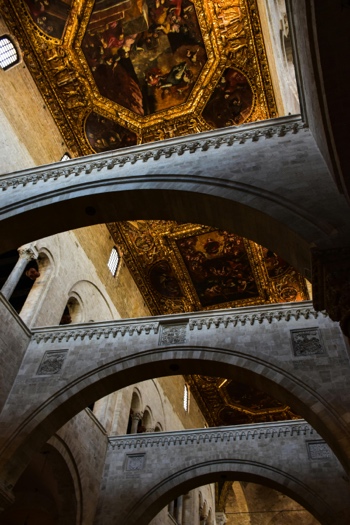
Bari’s history stretches back more than two millennia. Originally a Peucetian settlement (an ancient Italic people), it later came under Greek influence before being absorbed into the Roman Empire in the 3rd century BC. During Roman times, Bari developed into an important port and road hub along the Via Traiana, which linked Benevento to Brindisi.
After the fall of Rome, the city passed through a series of rulers, including the Byzantines, Lombards, and Saracens. In the 11th century, Bari became a strategic center of the Norman Kingdom of Sicily, and it was during this period that the Basilica of Saint Nicholas (1087) was built to house the relics of the saint, transforming Bari into a major pilgrimage destination for both Catholics and Orthodox Christians.
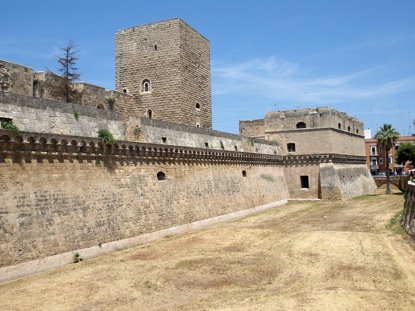
Throughout the Middle Ages and Renaissance, Bari remained a contested stronghold, governed at different times by the Angevin and Aragonese dynasties. The Swabian Castle, rebuilt by Emperor Frederick II in the 13th century, still stands as a testament to Bari’s importance as a defensive and political center.
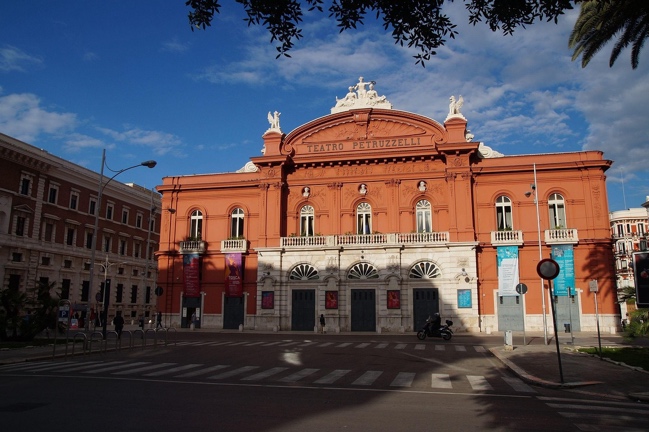
As Bari expanded beyond its medieval walls, the city also developed a vibrant theatrical and cultural life, expressed through its historic theatres. The Teatro Petruzzelli stands as the city’s largest and most renowned stage for opera, ballet, and concerts, symbolizing Bari’s international cultural profile. The Teatro Margherita, uniquely built over the sea, now serves as a contemporary art venue, while the Teatro Piccinni, the oldest in the city, continues to host a variety of performances and events. The Teatro Kursaal Santalucia, recently restored, adds to this tradition as a versatile cultural space. Together, these theatres showcase Bari’s enduring commitment to the performing arts and its role as a cultural hub of southern Italy.
In the 20th century, Bari grew into one of southern Italy’s leading economic, cultural, and academic hubs. Its strategic position on the Adriatic has also made it a gateway to the Balkans and the Eastern Mediterranean, reinforcing its long-standing role as a crossroads of peoples, trade, and ideas.
Today, Bari preserves this layered history in its architecture, traditions, and urban landscape, while projecting itself as a modern Mediterranean city open to the world.
Places to visit
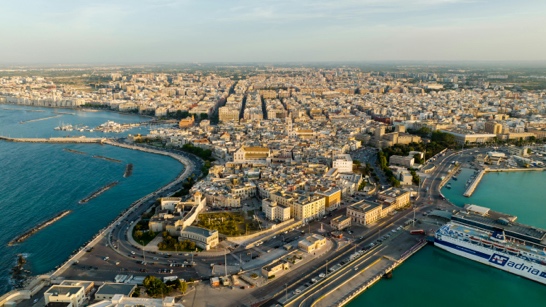
Bari, the capital of the Apulia region in southern Italy, is a dynamic Mediterranean city that blends a rich historical past with a vibrant modern character. With more than 300,000 inhabitants, it is not only an important cultural and commercial center but also home to one of Italy’s largest universities, the University of Bari Aldo Moro.
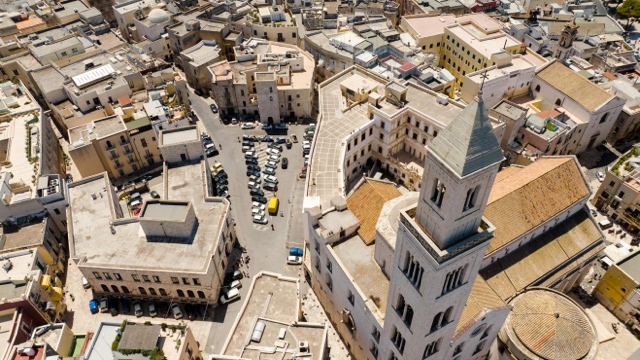

The heart of the city is Bari Vecchia, the old town, a maze of narrow streets overlooking the Adriatic Sea. Here visitors can explore architectural treasures such as the Basilica of Saint Nicholas, the Cathedral of San Sabino, and the Swabian Castle, which together bear witness to Bari’s centuries-long role as a crossroads of cultures.
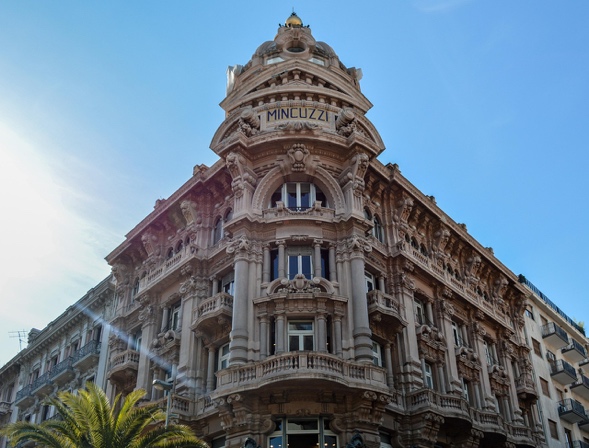
South of the old town lies the newer district, with its elegant 19th- and 20th-century boulevards, lively shopping streets like Via Sparano, and vibrant cafés and restaurants. The scenic Lungomare, one of Italy’s longest seafront promenades, offers panoramic views of the Adriatic and is a favorite place for walking and socializing.

Bari is also renowned for its culinary traditions, featuring typical Apulian specialties such as handmade orecchiette pasta, focaccia barese, fried panzerotti, and fresh seafood. Local markets and family-run trattorias bring the authentic flavors of the region to life.
Cultural life is equally rich: the Teatro Petruzzelli, one of Italy’s most prestigious opera houses, hosts performances ranging from classical music to ballet and contemporary concerts, while the Pinacoteca Metropolitana showcases artworks spanning from the Renaissance to the modern era.
With its mix of history, culture, gastronomy, and Mediterranean atmosphere, Bari offers visitors a unique and welcoming setting in which to combine academic exchange with the discovery of one of southern Italy’s most captivating cities.
Places to visit nearby (1h distance)
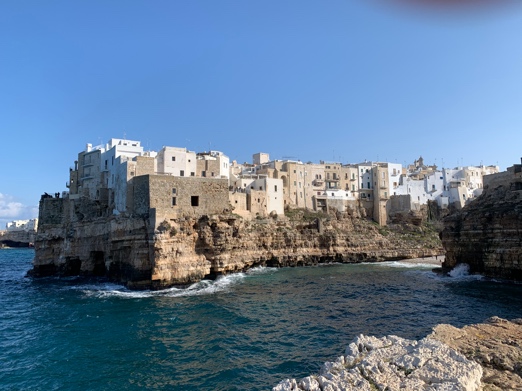
Polignano a Mare (30–40 min by train) – A spectacular seaside town perched on limestone cliffs above the Adriatic. Famous for its whitewashed alleys, sea caves, and breathtaking views, it is also the birthplace of singer Domenico Modugno (Volare). How to get there: Direct regional trains (Trenitalia) from Bari Centrale to Polignano a Mare run frequently and take about 30–40 minutes.
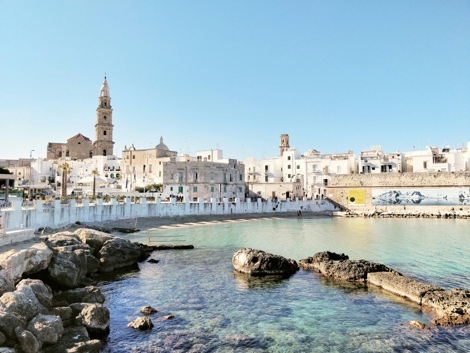
Monopoli (35–45 min by train) – A charming coastal city with a lively old port, a historic center filled with churches and palaces, and a beautiful seafront promenade. How to get there: Regional trains from Bari Centrale to Monopoli take around 40 minutes.
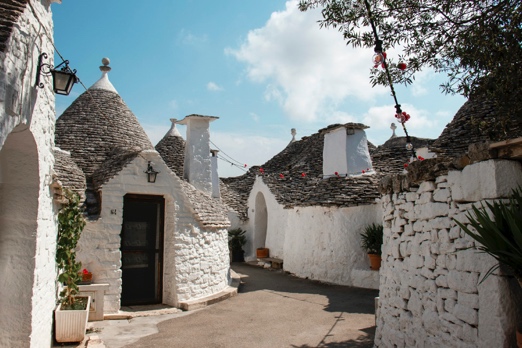
Alberobello (1 h by train + transfer) – A UNESCO World Heritage Site renowned for its trulli, the traditional conical stone houses unique to Apulia. How to get there: From Bari Centrale, take a Ferrovie del Sud Est (FSE) train or bus toward Alberobello. Journey time is about 1 hour.
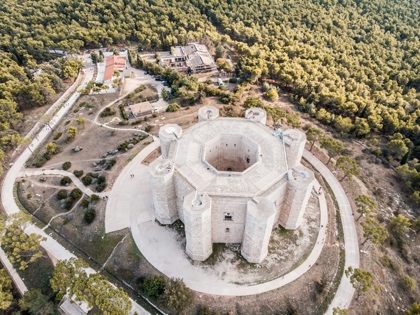
Castel del Monte (1 h by train + bus) – The iconic octagonal fortress built by Emperor Frederick II in the 13th century, a UNESCO World Heritage Site. Its mysterious design and isolated hilltop setting make it one of Italy’s most fascinating monuments.
How to get there: Train from Bari Centrale to Andria (about 50 min), then local bus or shuttle (approx. 20 min) to the castle.
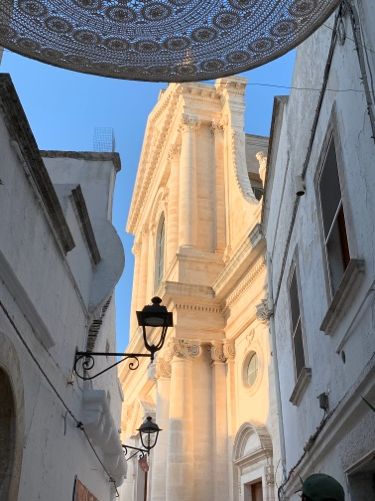

Matera (1 h 15 min by train) – Just across the regional border in Basilicata, Matera is world-famous for its Sassi cave dwellings carved into the rock, also UNESCO-listed and European Capital of Culture in 2019. How to get there: FAL (Ferrovie Appulo Lucane) trains run from Bari Centrale FAL station to Matera Centralein about 75 minutes.
Locorotondo (1 h by train) – A small hilltop town in the Itria Valley, celebrated for its circular historic center, whitewashed houses, and excellent local wines. How to get there: Take an FSE train from Bari Centrale (Sud Est station) to Locorotondo in about 1 hour.
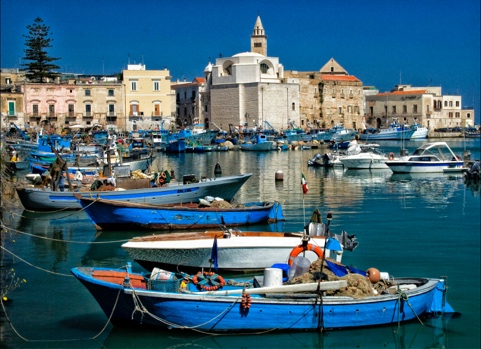
Trani (40–45 min by train) – A historic port city with a stunning Romanesque cathedral overlooking the sea, a medieval Jewish quarter, and a lively marina. How to get there: Direct regional trains from Bari Centrale to Trani take around 40 minutes.

|

|

|

|
